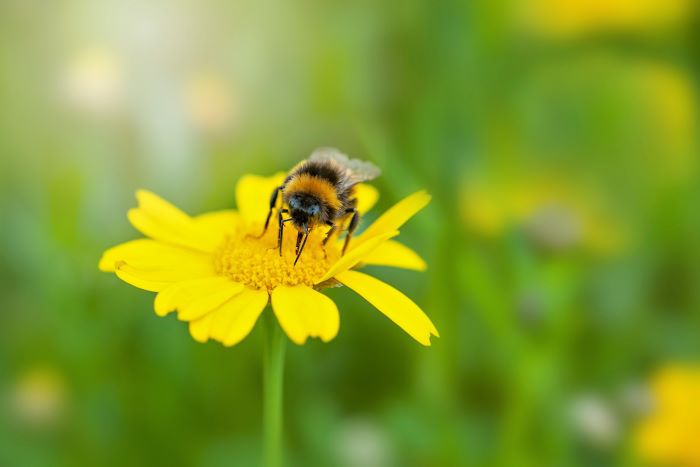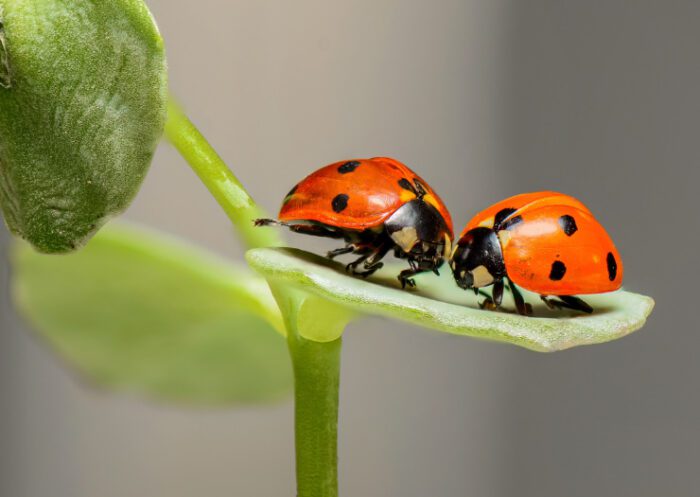Ladybugs, also known as lady beetles or ladybird beetles, are familiar insects with their bright red bodies and black spots. While most people know that they eat aphids and other garden pests, there are many lesser known benefits these helpful bugs provide in the garden. In this article we talk about Lesser-Known Benefits of Ladybugs in Your Garden.
Table of Contents
Pollination

While not as efficient as bees, ladybugs do aid in pollination as they move from plant to plant. The mobility of adult ladybugs allows them to carry pollen on their bodies and spread it to different flowers, contributing to the pollination necessary for good fruit and seed production.
Though supplementary to bees, ladybugs can be important pollinators, especially early and late in the growing season when few bees are active.
Predation
The most well-known benefit ladybugs provide is preying on soft-bodied insect eggs and larvae such as aphids, whiteflies, mites, and scale insects. A single ladybug can eat over 5,000 aphids in its lifetime.
The alligator-like mouthparts of the ladybug larvae are designed to pierce the bodies of their prey and suck out the fluids. Adult ladybugs are also voracious predators, though they have chewing mouthparts and eat the entire body of their prey. By controlling sap-sucking and leaf-feeding pests, ladybugs prevent major damage to your garden plants.
Pesticide Alternative
Releasing ladybugs in your garden provides natural pest control and a chemical-free alternative to pesticides. Ladybugs significantly reduce the numbers of many common garden pests without the use of toxic substances.
They break the reproductive cycles of these pests by feeding on eggs and larvae. The cost of purchasing live ladybugs from garden stores or online is also far less than repeated applications of insecticides. With ladybugs patrolling your garden for aphids, mites, and other pests, pesticides become unnecessary.
Soil Aeration & Nutrients
As ladybugs move through soil and leaf litter hunting insect eggs and larvae, their movement helps aerate the soil. Their burrowing also brings nutrients closer to the surface where plant roots can better access them.
The additional soil nutrients are also made available through the waste and cadavers left behind by ladybugs. When ladybugs die in your garden, their bodies decompose and release nitrogen and other elements that enrich the soil for your vegetables and flowers.
Natural Pesticide Detector
The presence and population numbers of ladybugs in your yard can act as a detector for pesticide use in the area. Ladybugs are highly sensitive to chemical residues, and most conventional pesticides are highly toxic to these beneficial insects.
If the ladybug population in your garden suddenly declines without an obvious cause like cold weather, it may indicate pesticide drift from a neighboring property. Observant gardeners can use fluctuations in the ladybug population to determine if and when harsh pesticides are being used nearby.
Garden Health Indicator
A healthy population of ladybugs in your yard is an excellent indicator that your garden ecosystem is in balance. Ladybugs require ample food in the form of aphids and other plant-sucking insects.
An abundance of these pests means there is an imbalance allowing them to thrive. When ladybug numbers are high, it demonstrates they have plenty of food sources and that your garden biodiversity and soil health support these beneficial predatory insects. Think of ladybugs as a living barometer to gauge the harmony of your garden environment.
Natural Pest Control Education
The presence of ladybugs in your garden provides a great educational opportunity to teach children about beneficial insects and natural pest control. The recognizable and charismatic ladybug can inspire the next generation of gardeners.
Watching ladybug larvae feed on aphids on roses or vegetable plants is a vivid demonstration of biological control. Children are fascinated by the life cycle of ladybugs from egg to larvae to pupae to adult. Use ladybugs to spark curiosity about nature in kids and educate them about sustainable and ecological gardening practices.
Petal Colors
Though less understood, some evidence suggests that the presence of ladybugs enhances flower colors. The theory is that ladybugs feeding on pests like aphids reduces plant stress, allowing them to achieve maximum bloom color intensity.
Observations seem to support more vibrant yellows, reds, and oranges in roses, geraniums, and other flowers when ladybugs are established in the garden. Though research is limited, attracting and keeping ladybugs around may contribute to more colorful blossoms.
Natural Pesticide
The blood or hemolymph of ladybugs contains alkaloids that make the insects taste bitter. Ladybugs reflexively bleed from their leg joints when threatened, and this fluid acts as a natural pesticide repelling predators like birds and spiders.
Though not practical for large-scale use, some home gardeners have had limited success collecting ladybug hemolymph and using diluted solutions as a natural repellent spray on plants susceptible to pests. As a completely non-toxic and likely short-lived foliar spray, it can be an intriguing experiment for the ecologically-minded gardener.
Conclusion
From aiding pollination and soil health to indicating garden harmony and demonstrating natural pest control to children, ladybugs have many secondary benefits beyond simply eating common insect pests. Their versatility, sensitivity, and ease of attracting make them an ideal integrated pest management solution with advantages surpassing basic biological control.
Take notice of the ladybugs in your yard and think of them as your garden’s guardians, pest patrol, soil stewards, pollinator assistants, and overall ecological health indicators. Welcome them, protect them, and utilize them to your garden’s advantage. I sincerely hope you find this “Lesser-Known Benefits of Ladybugs in Your Garden” article helpful.

With over 5+ years of experience in pest control and a PhD in Entomology, our author brings a blend of scientific knowledge and practical expertise to Pestifier.com. Passionate about creating pest-free environments, they provide effective tips and strategies for managing and preventing pest infestations. Connect on Facebook for the latest updates and insights.

